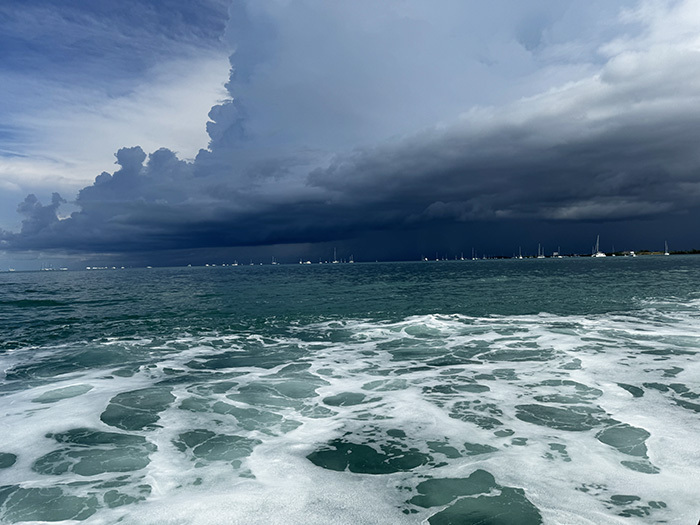FWC urges vessel owners to prepare and secure their boats for impending severe weather
Florida Fish & Wildlife Conservation Commission sent this bulletin at 09/23/2024 02:31 PM EDT
(Having trouble viewing this email? View it as a Web page.)
For immediate release: Sept. 23, 2024
Media contact: Ashlee Sklute, Ashlee.Sklute@MyFWC.com
Suggested post: Secure boats ahead of impending severe weather #Boating #Safety #Severeweatherhttps://content.govdelivery.com/accounts/FLFFWCC/bulletins/3b79b96 @MyFWC #Florida

FWC urges vessel owners to prepare and secure their boats for impending severe weather
Interviews available upon request.
Today, Governor Ron DeSantis issued Executive Order 24-208, Emergency Management – Potential Tropical Cyclone Nine, declaring a state of emergency in 41 Florida counties ahead of the storm. Weather is expected to strengthen and is anticipated to cover a large area, affecting regions well beyond its center into Florida. There is a considerable risk of storm surge, coastal flooding and erosion, heavy rainfall and flash flooding, as well as damaging winds. Preparation is critical to staying safe and minimizing severe weather impacts. The Florida Fish and Wildlife Conservation Commission (FWC) gathered the following informational resources to help boaters prepare and recover from intense storms.
Move your vessel if you can and protect it if you can’t
- If your boat can be trailered, haul it out of the water and move it to a safe location as far from tidal waters as possible. This includes kayaks and other recreational watercraft.
- If your vessel must stay in a marina berth, double all lines and rig cross-spring lines fore and aft, and attach lines high on pilings to allow for tidal rise or surge.
- If your vessel is at anchor, move to the most protected area possible and set out multiple anchors with at least a 10:1 scope, remove canvas coverings if possible, and remove or secure any sails.
- If your vessel is to remain on a mooring, make sure it is designed to withstand the load that your vessel will place on it. Inspect chains and swivels connecting to the mooring buoy and double up on the pendant.
- Remember to remove Electronic Position Indicating Radio Beacons, life rings, life jackets and loose items from the boat and store them in a safe, indoor location.
- Use the Florida Boat Ramp Finder to find a ramp near you.
Cover all lines to prevent chafing
- Wrap all lines where lines feed through chocks with tape, rags and rubber hoses or leather. Install fenders, fender boards or tires to protect the boat from rubbing against the pier, pilings or other boats.
Charge batteries and make sure they can run automatic bilge pumps throughout the storm
- Consider adding backup batteries and shut off all other devices that consume electricity.
Do not stay onboard and do not venture out into rough conditions
- If you’re onboard during a bad storm, you are risking your life and the lives of potential responders.
- Learn what Florida law says about mandatory marina evacuations. Chapter 327.59, F.S., Marina Evacuations.
After the storm, report issues to the FWC
- Check marina eligibility for disaster relief through Small Business Administration loans. SBA Disaster Assistance.
- Report missing and/or damaged waterway markers.
- Report storm-damaged boats that might be lost or abandoned to your local law enforcement agency (preferred) or the FWC Division of Law Enforcement at 888-404-3922.
- Call 911 or use VHF Marine Radio Channel 16 to report distress and other emergencies. Social media should not be used to report life-threatening distress due to limited resources to monitor the dozens of social media platforms during severe storm events.
For more information, visit MyFWC.com/boating and click on “Boater Education.”

